1. Table

The main goal of this assignment was to get familiar with the basic commands of the grasshopper and create variations of the principal design. All the solids created derive from the same coordinate points, differing only in the way they were manipulated in order to generate the table base.
Starting from five points, a curve was created and revolved into a solid. Then, the surface solid was subdivided in the UV direction and extruded into pipes to give form to the table base.
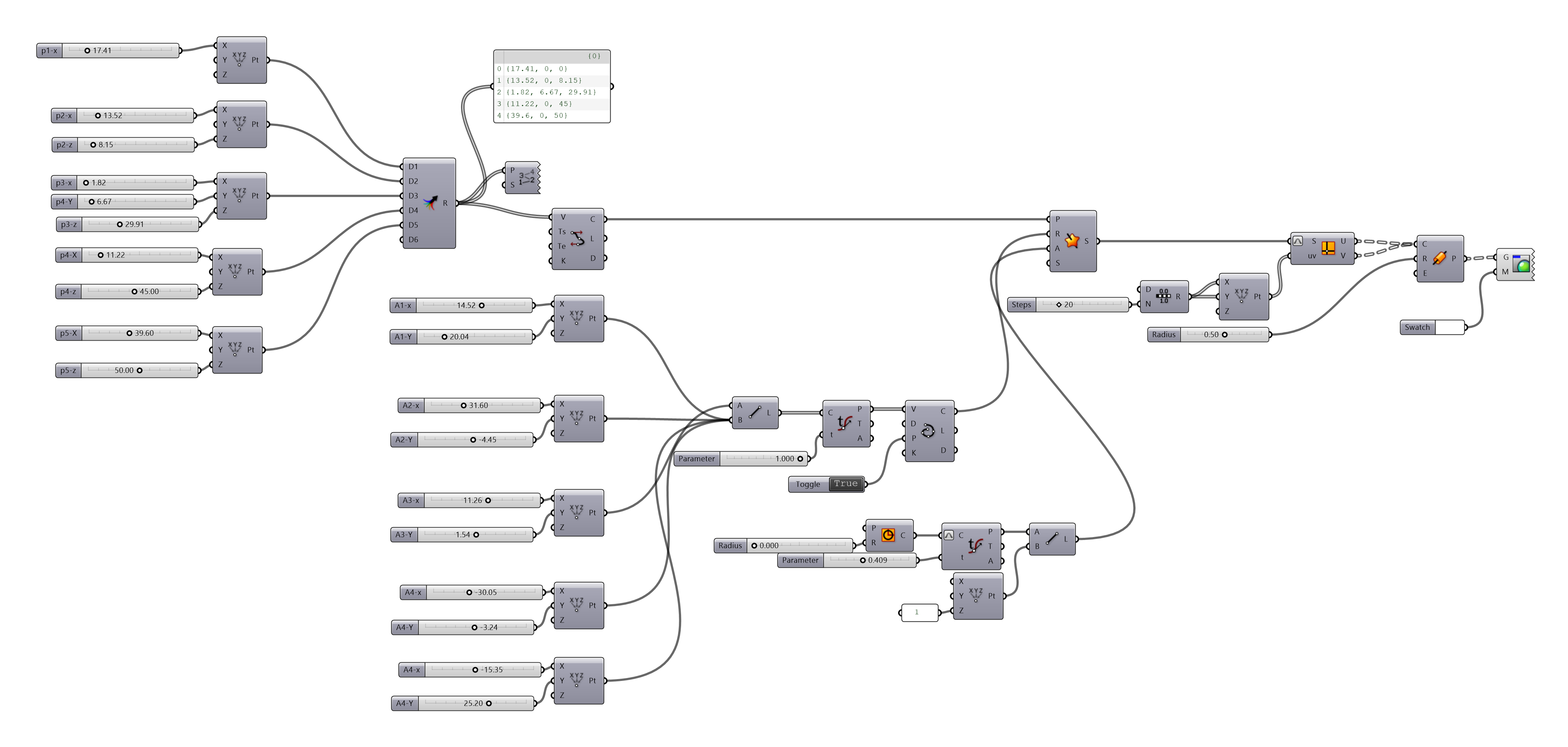

2. Leaf
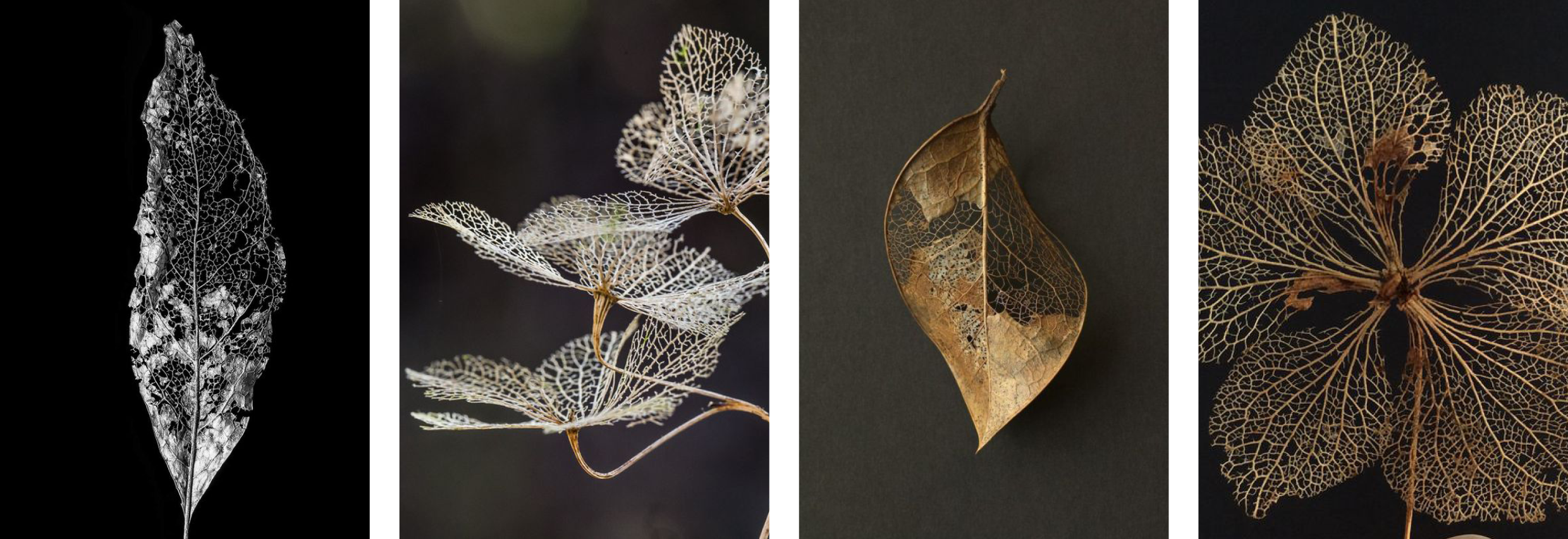
This assignment was inspired by the dry leaf pattern. The main idea was to use a curve as an attractor to the Voronoi pattern on an organic surface. In the first attempt, an organic shape was created, and then the pattern was created using the 3D Voronoi. Since it took time for the program to process the data, a second attempt was made, first creating the pattern on a plane surface and later projecting it on the leaf surface. Although, in the first attempt, the program had an error concerning the patch, the final result was better than the second one and closer to the expected result.

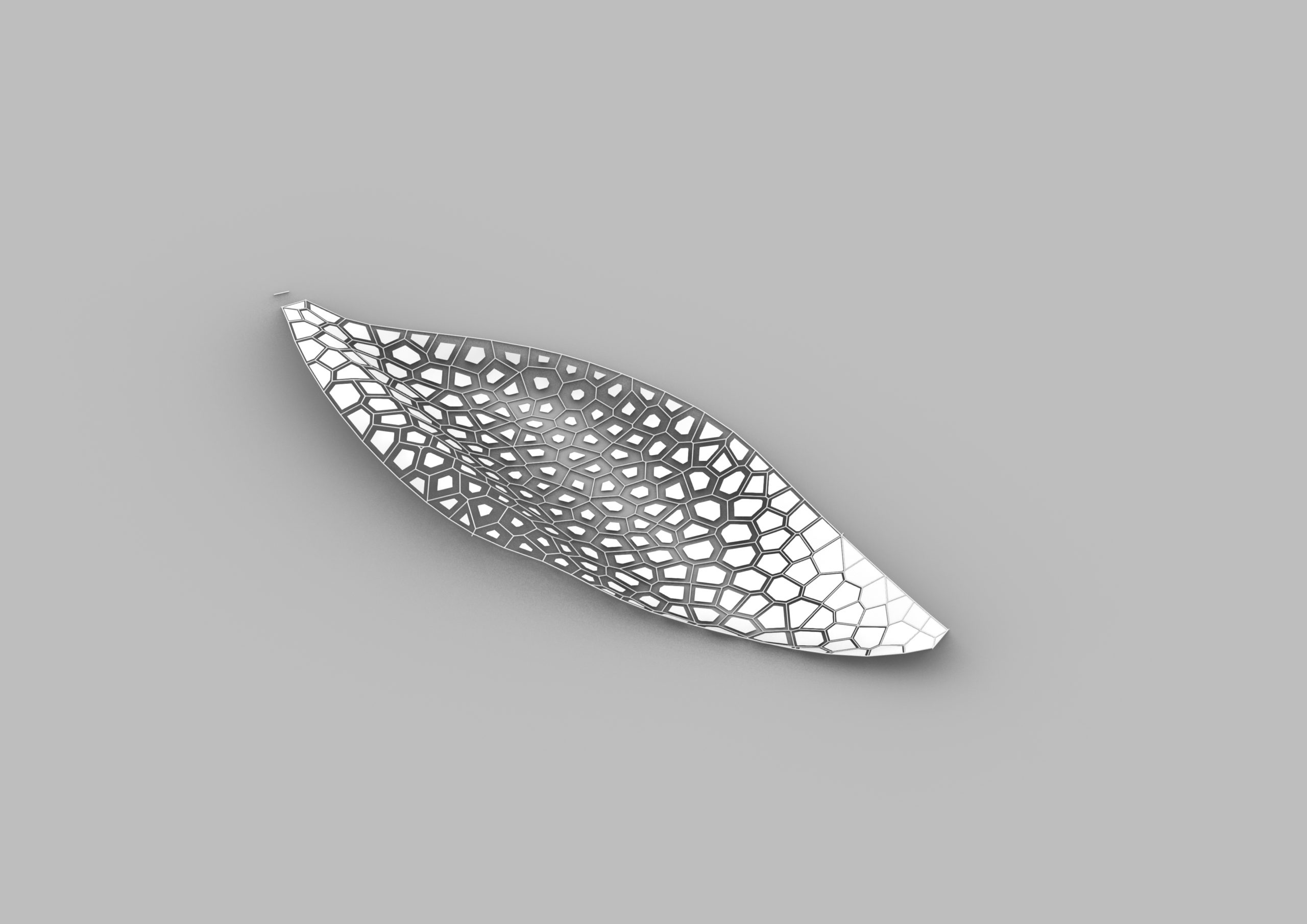

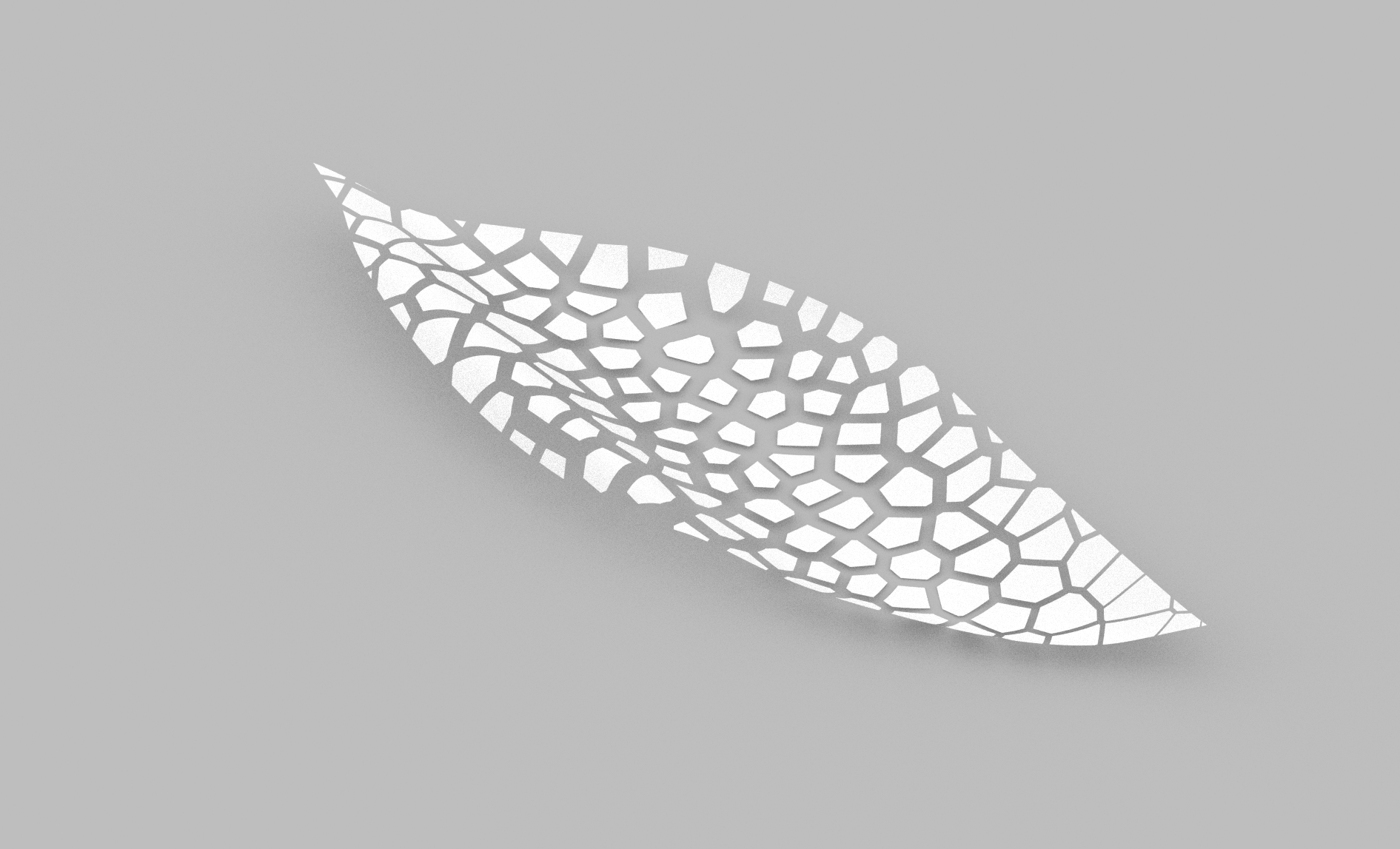
3. Dome Pavilion

The idea of this assignment was to create a pavilion by using mesh and the commands related to it. First, a rectangle was constructed and populated with points. From each point, a sphere was created with different diameters using the gene pool command and moved along the z coordinate. Then, the spheres were united, the bottom part of them was removed, and the surface was divided into a triangle mesh. The boundaries of each triangle were offset, and scaled from its center point, forming the pavilion.

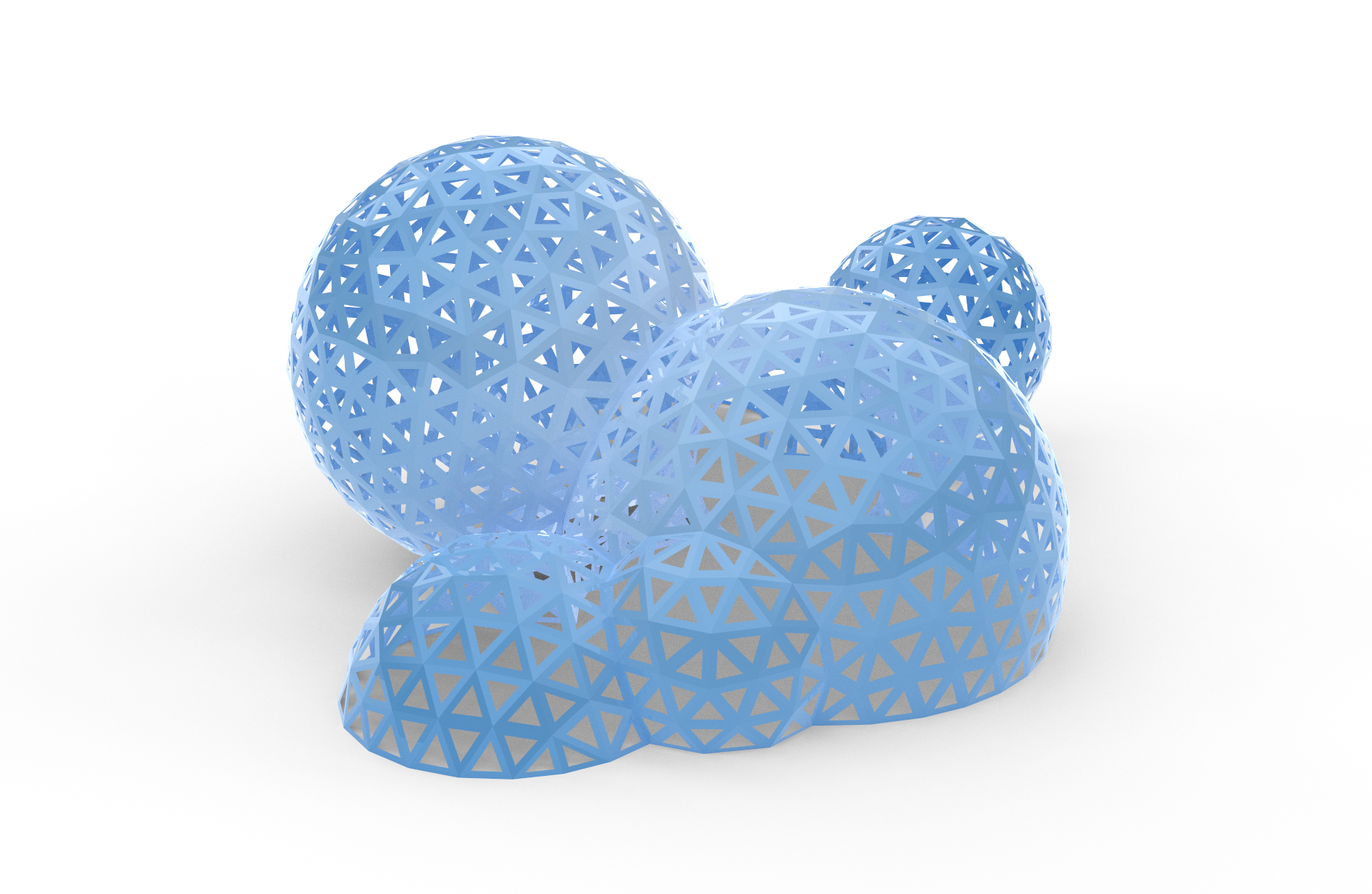

4. Life under the water

The final submission was inspired by Life Under the Water, in which three animals were designed: a sea urchin, a stingray, and a jellyfish. The main purpose of this work was to use the previous commands learned (conditional statements, data management, and data trees) and include animation and camera features.
For the sea urchin, a sphere was created, and its surface was divided into hexagonal cells. Then, the center of the hexagonal shapes was extracted, scaled, moved, and extruded to form the animal thorns.
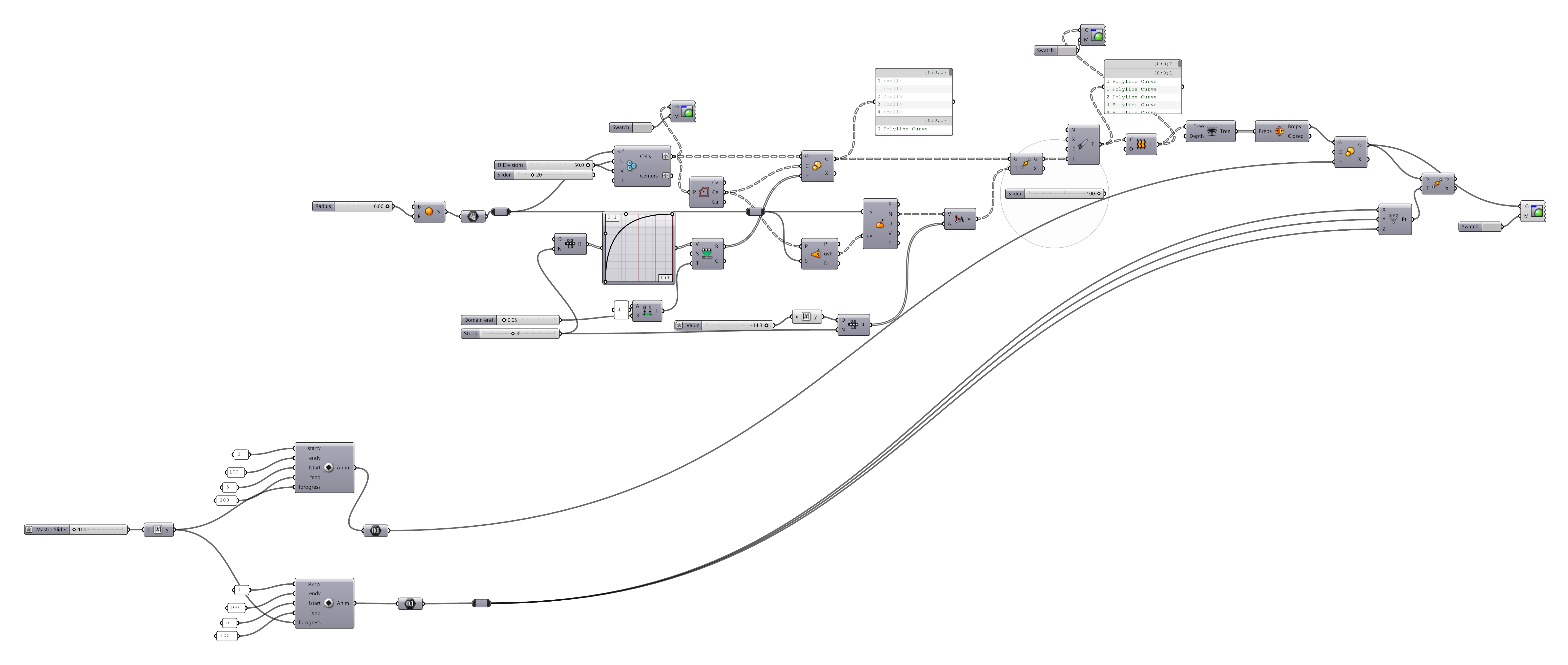
For the stingray, a rectangular grid was constructed and deconstructed at its points. Then, waves were created by moving the points in the z-direction according to a sin equation. Lastly, the stingray outline was designed in Rhino and projected onto the surface.

Finally, for the jellyfish, a curve was designed and revolved to create the “head” of the jellyfish. For the tentacles, lines were drawn according to a sin equation, and tubes were created from those lines.


